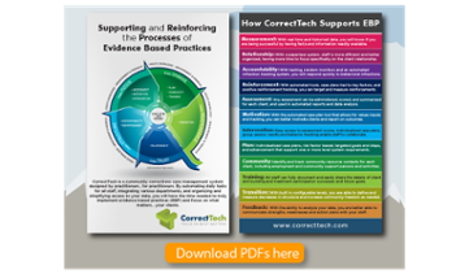
- Labeling client’s based on their offense (aka: sex offender, murderer) could inadvertently reinforce the behaviors we don’t want to see from them. Referring to clients as people first (not just to their face but also when discussing them with colleagues, community members, etc.) is a better approach with more chances of true rehabilitation for both them and the community. We have always called our clients, clients, instead of offenders for this reason. We’ve learned the labeling of a client as a “sex offender” can have unintended impact.
- Children who spend more than six months in an orphanage are more likely to have problems developing good decision-making tendencies. The nurturing a child gets from an actively attentive parent or guardian figure is incredibly important to the child’s development according to Dr. John Arden. Not having the hands on attention at a young age causes the prefrontal cortex of the brain’s development to be imbalanced. The right prefrontal cortex will develop more, causing negative ramifications in the child’s short-term and long-term coping mechanisms, decision-making processes, and general mental state. These children will be more likely to withdraw and have anxiety and depression. But there is good news – leading to another thing we learned at ICCA…
- “Your brain isn’t hardwired, it’s soft wired.” – Dr. John Arden This is great news for community corrections practitioners. A practitioner’s job is to help clients with reentry and reduce recidivism. What better way to accomplish this both long-term and short-term than helping a client “rewire” their brain? If a case manager can help a client change their default coping mechanism from avoidance to proactivity, they are changing the way their brain processes difficult situations. According to Dr. Arden, change is one of the biggest anti-depressants. And there’s more…
- Not feeling ready to make a change means you are in the perfect place to start the change process. Arden said, “don’t wait to feel ready.” Being unsure about your change process means you have room to grow and get out of your comfort zone. Feeling anxious about what to do next gives you the power to change the way you deal with difficult situations. Dr. Arden suggests we urge clients to make small changes that can enable progress towards the end goal: getting more exercise or eating fewer and healthier calories. These small steps can lead to the neurogenesis and healthy brain function that case managers are looking for in helping a client rewire their brain. Is this time consuming? Of course. But starting with small and non-threatening steps can be very effective.
- Daydreaming isn’t always bad. According to Dr. Arden, daydreaming can be productive. If you catch your client daydreaming, ask them where they went. Their daydreams, or default mode network, can be creative and projective – building a picture of their goals being reality – or anxious and destructive. Chronic stress and recurring depression are large inhibitors to forming the healthy brain function and the neurogenesis that case managers rely on to make strong progress with their clients.
- Risk and need assessments have become a standard but need matching is still largely falling short. We all know about the need principle and it’s simple tenet guiding the assessing and addressing of criminogenic needs. Don’t we also all agree that there should be follow-through? According to different studies of youth need matching less than half of the assessed needs were being matched with the correct interventions the agency offered.[i] This begs the question “what’s the point of doing an assessment if you aren’t going to follow through?” A 2011 study found that although there was evidence of some over identification of needs, between 78% and 100% of needs assessed were met and proved to be highly effective in reducing recidivism.[ii] So this need matching can be done, and when it works it really works. **Our team at CorrectTech totally agrees with this teaching. Check out our case planning tool that helps match interventions to identified needs.
- The biggest thing I took away is the shift in mindset within community corrections. I have been to a number of conferences but at this ICCA show every conversation seemed to be around having the data to drive decisions. Staff wants to know what’s working, what’s not, and what kind of clients need what. In the past it has been everyone needs treatment, as much as we can give them. Now, directors want to know everything they did with a client that led to their positive discharge. Treatment, dosage, employment, education, etc. They want to be able to see the entire history of clients in their program.
- Community corrections practitioners are a passionate, compelling and humorous bunch.
[i] Patterson-Badali, Skilling & Haqanee 2015 and Singh, et al. 2014
[ii] Luong & Wormith conducted a study of youth programs in 2011 using in the Saskatchewan Department of Corrections, Public Safety and Policing assessment and progress reports and scoring records.


